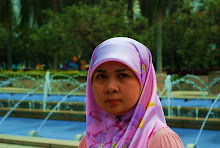Teaching Science using virtual experiment is another safe and effective way to conduct inquiry learning. I say safe here because children in the primary level still needs a lot of attention and guidance in handling experiments item.
It is effective because teachers can safe time in terms of preparing the experiment item and teacher can benefit from it if the school do not provide the necessary item relevant to the topics. All of this can take place only if there is an internet connection in school. iI the connection is down, teachers should be resourceful and maybe use a broadband internet device to connect to the internet manually.
Our task was done in Sekolah Rendah Rimba II involving 14 pupils of Year 4A using website shown below. Only 14 pupils were selected because the class teacher needed time with the other pupils to do some revision with them. Apparently the 14 pupils that was allowed to join our lesson are those who are of high and medium ability pupils
Teaching Activities
We started the lesson by explaing about "Plants" & "Animals", then continue with their difference & simuilarities.
We also discuss about animals habitats and the food chain.
we assess them by asking pupils orally in the first part of the lesson
The pupils are shown pictures prepared using the ''Power Point"
The website was the used to show a habitat of animals and plants.

 The lesson continues with with pupils answering questions on the website and choosing which plants and animals in the woodland habitat, then they were explained about the food chain.
The lesson continues with with pupils answering questions on the website and choosing which plants and animals in the woodland habitat, then they were explained about the food chain.For assessment the answer the MCQ questions provided.
Benefits for pupils
- The activity was fun and pupils enjoy the lesson.
- They used their hands-on and minds-on experience in the activity.
- The activity was colourful.
- The environment is a change from their classroom environment. Pupils usually enjoy going into the computer room away from their class.
- The experiment is safe and effective.
- Woodland
- Habitat
- Heron
- Desert
- Seashore
- Meadow
- Woodlouse
